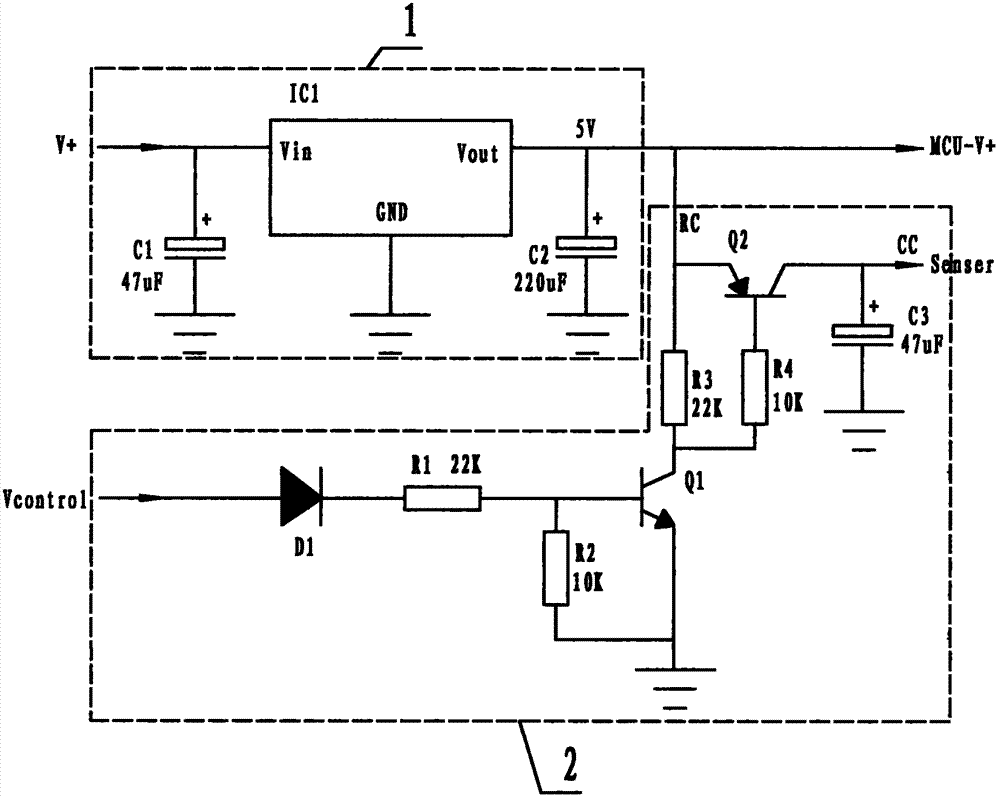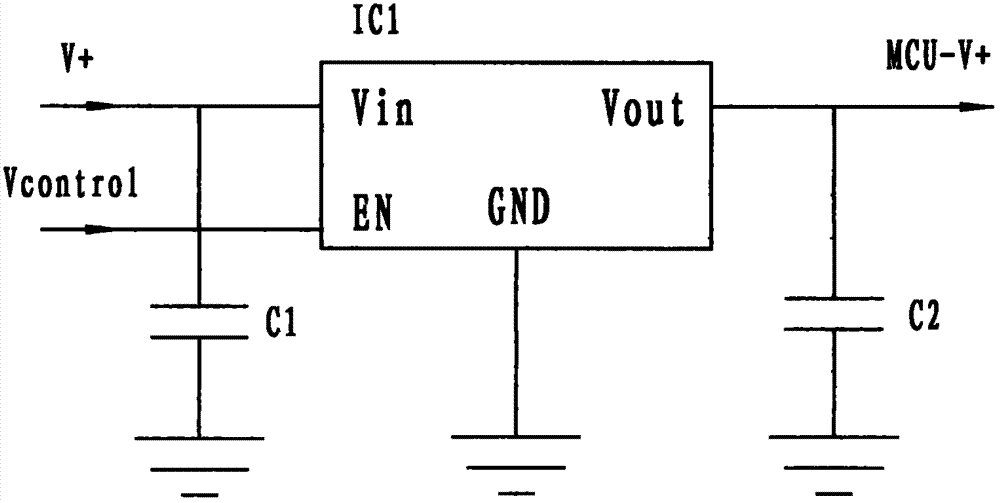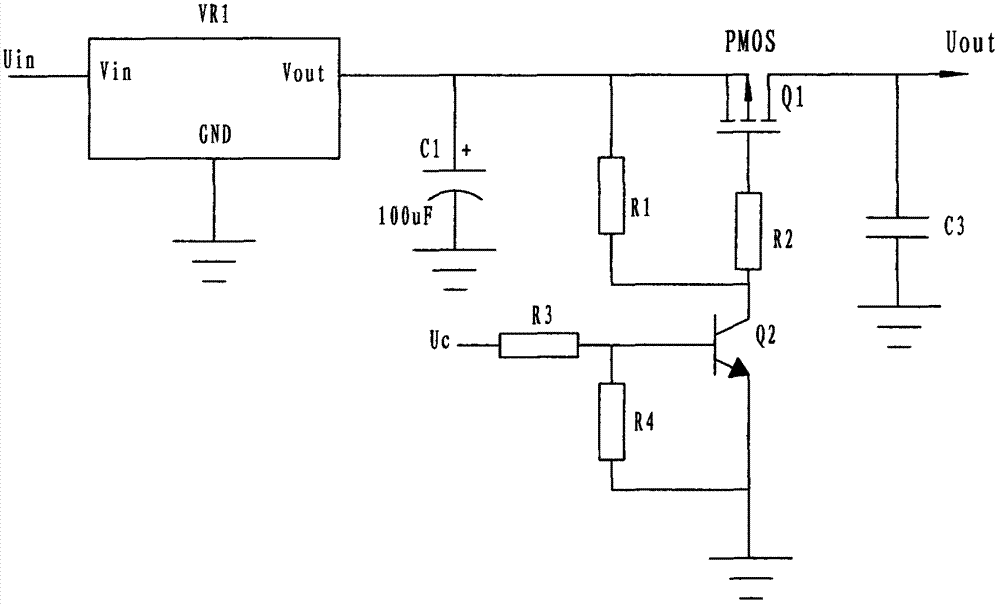Circuit device of reducing energy consumption of sensor
A circuit device and sensor technology, which is applied in the direction of instruments, adjusting electric variables, control/regulation systems, etc., can solve the problems of high energy consumption of sensors, high energy consumption, and unfavorable battery life.
- Summary
- Abstract
- Description
- Claims
- Application Information
AI Technical Summary
Problems solved by technology
Method used
Image
Examples
Embodiment 1
[0018] Embodiment 1, refer to figure 1 , a circuit device for reducing sensor energy consumption according to the present invention includes a voltage stabilizing circuit 1 and a sensor supply circuit 2, wherein: the voltage stabilizing circuit 1 is composed of a power supply chip IC1, a first capacitor C1 and a second capacitor C2; The sensor supply circuit 2 is composed of a first transistor Q1, a second transistor Q2, a switching diode D1, a third capacitor C3, a first resistor R1, a second resistor R2, a third resistor R3, and a fourth resistor R4; The first transistor Q1 is an NPN transistor, and the second transistor Q2 is a PNP transistor;
[0019] The positive pole V+ of the battery is connected to the positive pole of the first capacitor C1 and the voltage input terminal Vin of the power chip IC1, and the voltage output terminal Vout of the power chip IC1 is connected to the positive pole of the second capacitor C2, the emitter pole of the second transistor Q2, and th...
Embodiment 2
[0022] Embodiment 2, using a circuit composed of a power supply chip with an enable terminal EN, refer to figure 2 , the MCU provides the control voltage to the enabling terminal EN of the voltage stabilizing circuit, EN=1 is enabling, and EN=0 is disabling. When the control voltage is zero, the voltage regulator circuit has no voltage output, and the sensor has no current consumption. When the control voltage is at a high level, the regulated power supply outputs a voltage, and the sensor works. After the MCU turns on the sensor power supply for a proper delay, AD conversion can be performed to detect the corresponding output voltage of the sensor and detect the measured physical quantity.
[0023] There are two timers, A and B, in the MCU, and the A timer can work normally when the MCU sleeps and wakes up the MCU when the timing is over. After the MCU is woken up, first turn on the power supply of the sensor and start the B timer.
[0024] Sensors are divided into mathem...
Embodiment 3
[0026] Embodiment 3, adopt PMOS tube to replace the circuit device of PNP transistor in embodiment 1, refer to image 3 , its working principle is similar to that of Example 1.
[0027] The comparison of embodiment 1 and embodiment 2:
[0028] The advantage of embodiment 1 is that the switching speed of the triode is very fast, there is basically no delay, and it can work in a narrower switching pulse state, which is suitable for occasions requiring fast response and has a wide range of applications; its weakness is that there are many components. The circuit is more complicated. In application, when the sensor and the MCU are powered by the same power supply, only the triode switch circuit of Embodiment 1 can be used, because the MCU cannot turn off the power supply.
PUM
 Login to View More
Login to View More Abstract
Description
Claims
Application Information
 Login to View More
Login to View More - R&D
- Intellectual Property
- Life Sciences
- Materials
- Tech Scout
- Unparalleled Data Quality
- Higher Quality Content
- 60% Fewer Hallucinations
Browse by: Latest US Patents, China's latest patents, Technical Efficacy Thesaurus, Application Domain, Technology Topic, Popular Technical Reports.
© 2025 PatSnap. All rights reserved.Legal|Privacy policy|Modern Slavery Act Transparency Statement|Sitemap|About US| Contact US: help@patsnap.com



